DIY Potato pots are a fantastic way to grow Potatoes without digging up your yard. With some basic gardening knowledge, you can create affordable and easy-to-maintain Potato pots that yield plenty of delicious spuds for your family. Remember to choose the right size pot for your needs, use high-quality soil, and plant at the right time of year.
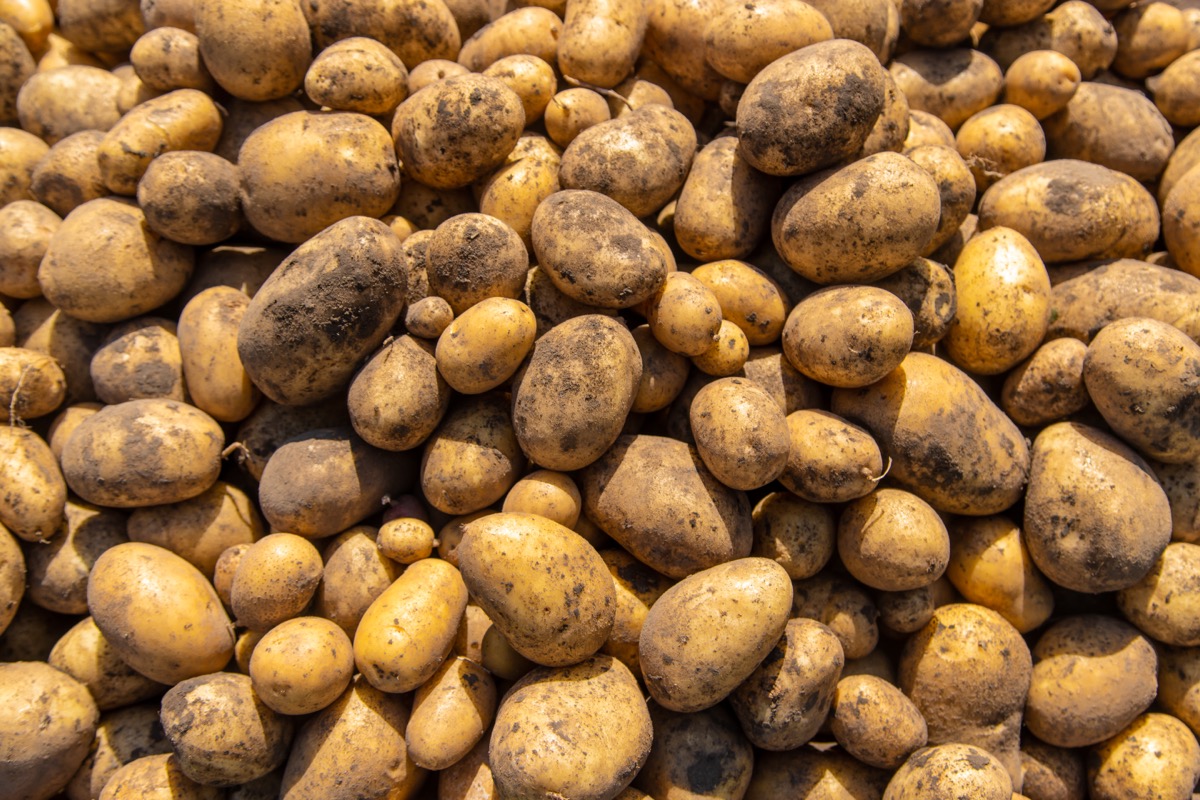
Monitor moisture levels and fertilize to ensure healthy growth throughout the season. Caring for your Potato plants properly will reward you with a bountiful harvest of homegrown Potatoes. Let’s check out more information on growing potatoes in containers/pots in detail below, l
Best Potato Varieties for Containers
Fingerling
Fingerling Potatoes are a popular choice for container gardening. They have an elongated, finger-like shape and come in different colors. One of the benefits of growing Fingerlings is their excellent taste. Another advantage of Fingerling Potato is that they take up less space than traditional Potato varieties. You can plant several plants in one container because they grow vertically instead of horizontally, like other types of Potatoes.
Gem
Gem Potatoes are a great choice for container growth due to their compact size and high yield potential. One of the advantages of growing gem Potatoes in containers is that they require less soil than other varieties, making them an ideal option for smaller spaces. They also tend to mature faster than larger Potato varieties so that you can enjoy your harvest sooner.
Red Potatoes
Red Potatoes are a popular variety for growing in containers. The reason is that they have a shorter growing season, which makes them perfect for container gardening. Red Potatoes also have thin skin and creamy flesh, making them ideal for roasting or boiling. Another advantage of growing red Potatoes in containers is that they’re less susceptible to diseases such as blight than those grown in soil. This means you can enjoy healthier crops with fewer issues with your plants.
In case you missed it: Best and Worst Companion Plants for Potatoes: A Detailed Guide
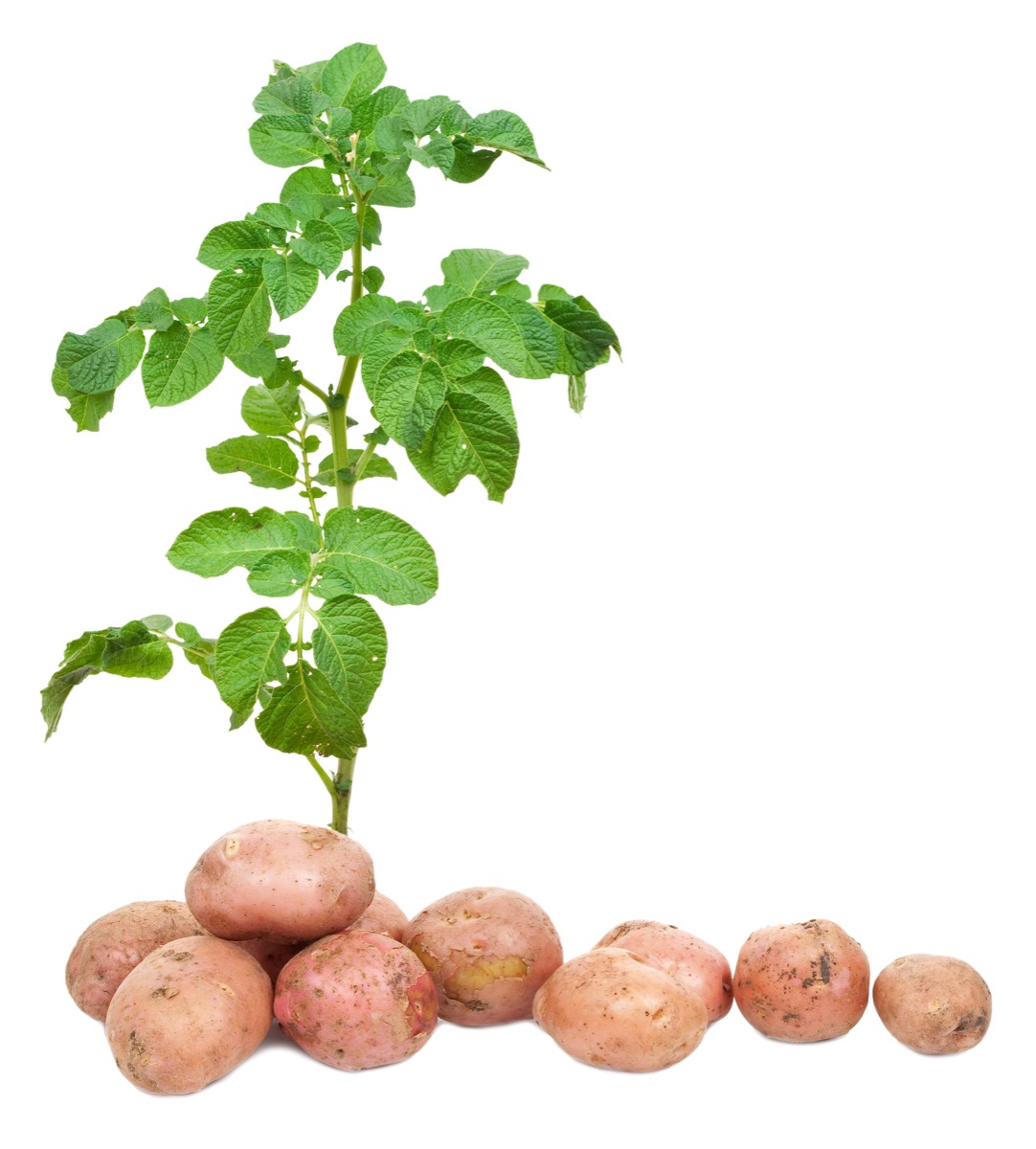
Growing Potatoes in Containers/Pots
Simple Container Method
A simple container method is one of the easiest ways to grow Potatoes without digging. All you need for this method is a large container, good-quality soil, and seed Potatoes. First, select a container 18 inches in diameter and depth. Make sure your chosen container has drainage holes at the bottom.
Fill up your container with around 6-8 inches of potting soil, then place your seed Potatoes on top of the soil at regular intervals. Once the plants start growing, add more soil layers until they reach the top edge of your container. Add layers as needed until it’s time to harvest your Potato crop.
Use a Laundry Basket
Using a laundry basket could be your solution if you want a cheap way to grow Potatoes without digging. This method is perfect for those with limited space or want to try something different. Firstly, choose a large plastic laundry basket with holes in the sides for ventilation. Fill it with soil and compost, leaving about 6 inches of space at the top. Then add your seed Potatoes on top of the soil around 4-6 inches apart.
Once planted, water your Potatoes well and cover them with another layer of soil. Ensure they are well-watered but not soaking wet, which can cause rotting. Add more soil layers as your Potato plants grow until the basket is full. You should start seeing sprouts emerge from the top layer of soil within a few weeks. When harvesting your Potatoes, tip the basket onto a tarp or sheet and sift through the soil to find them all. A laundry basket is an inventive way to grow delicious homegrown Potatoes without digging up any land.
A Wooden Tower
Growing Potatoes in a wooden tower is an innovative and eco-friendly way to grow your produce at home. This method allows you to maximize your space while adding a decorative element to your garden. First, build a frame using four pieces of wood approximately 2 feet long to make a wooden Potato tower. Next, add additional layers of wood to create the height you desire for your tower. You should leave enough space between each layer for soil and plants.
Once your frame is complete, fill it with soil up to the first level of the frame. Plant several seed Potatoes in this layer and cover them with soil. As the plants grow taller, continue adding more layers of soil and wood until you reach the top. One benefit of growing Potatoes in a wooden tower is that it makes harvesting easier since all Potatoes will be contained within one central location instead of being spread across your garden bed.
Use Plastic Bags
Growing Potatoes in plastic bags is a simple and cost-effective way to cultivate your crop. You can use any plastic bag, including garbage or recycled shopping bags. First, fill the plastic bag with soil until it is about one-third full. Then place seed Potatoes on top of the soil, spacing them evenly apart. Cover the seed Potatoes with another layer of soil until they are completely covered.
In case you missed it: Homemade Fertilizers for Root Vegetables: Potatoes, Carrots, Beetroot, Onions, Radishes, Turnip, Ginger, and Garlic
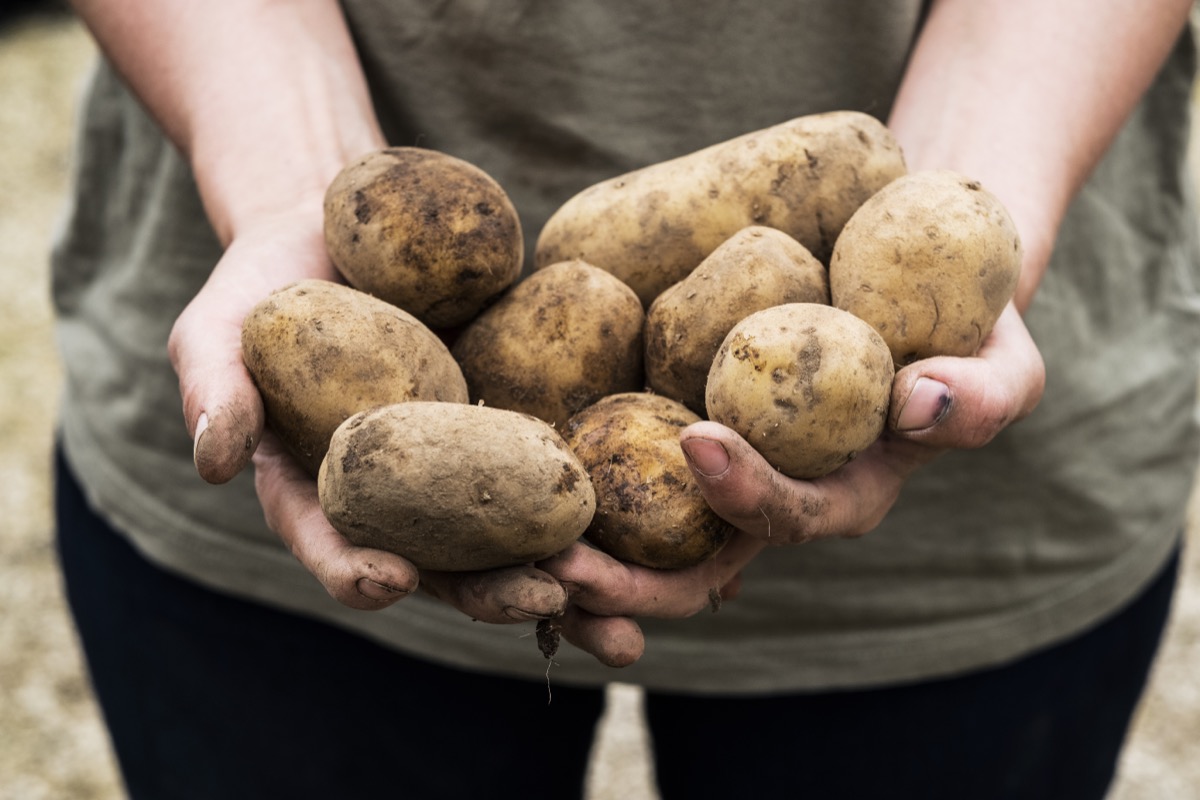
Add more soil to the bag until it reaches the top. This will promote further growth and development of new tubers. It’s important to ensure that there are holes at the bottom of each plastic bag for proper drainage. Overwatering can lead to rotting roots and stunted growth in your Potato plants. Plastic bags also provide portability for your Potato plants as you can easily move them around depending on sunlight and temperature changes throughout different seasons.
Use a Plastic Tub
Using a plastic tub is an excellent option if you want an easy way to grow Potatoes without digging up your garden. Find a large plastic tub or container that has drainage holes in the bottom. Fill the bottom with gravel or rocks to improve drainage. Next, add about 6 inches of soil to the gravel layer. Ensure the soil is loose and well-aerated so your Potato plants can grow healthy roots.
Now it’s time to plant your Potatoes. Place them gently onto the soil surface, evenly across the container. Cover the Potatoes with another layer of soil until they are completely buried. As the Potato plants grow taller, add more soil layers until you reach the top of the container. This will help encourage more tubers to form along each stem. Don’t forget to water regularly, especially during dry spells. And once your Potatoes have reached maturity (usually around late summer), tip over the container onto a tarp and harvest your delicious spuds.
Growing Potatoes in Tires
Growing Potatoes in tires is a creative and eco-friendly way to grow fresh produce. This method allows you to use old tires that would otherwise end up in landfills. To start, find four or five used tires and stack them on each other. Make sure they are cleaned thoroughly before planting any Potatoes inside. Fill the tire with soil about 2 inches above the bottom tire, then add Potato seeds or seedlings into the soil.
Cover them with more soil until it reaches halfway up the next tire. As the plants grow taller, add more soil until it reaches the top tire. Remember to water regularly and fertilize every few weeks. The benefit of growing Potatoes in tires is that when it comes time to harvest, you can remove one tire at a time and collect your Potatoes from each layer of soil without digging deep into traditional garden beds.
Growing Potatoes in Straw
If you want an inexpensive way to grow Potatoes, then growing them in straw might be just what you need. This method involves creating a mound of straw with Potato seedlings placed on top and then gradually adding more layers of straw as the Potatoes grow. You can prepare seed Potatoes by cutting them into chunks with at least two eyes each.
In case you missed it: Guide to Growing Potatoes in Texas: At Home, In Backyard, Containers, In Winter and Summer
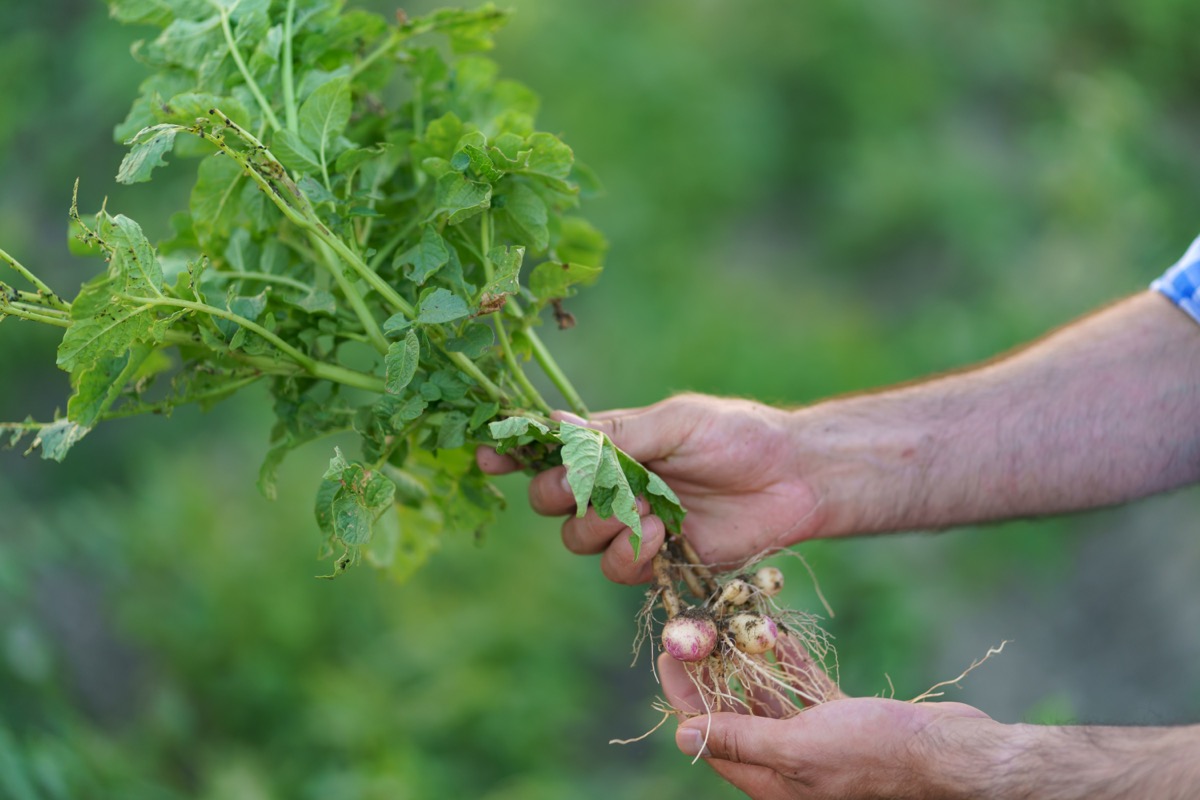
Then create a small trench in the center of your mound of straw and place the Potato chunks inside with their eyes facing up. Cover the Potatoes with an additional layer of straw. Add more straw layers around the base as your plants grow until they reach about 18 inches tall. This will allow enough space for tubers to form without being exposed to sunlight which can turn them green.
It requires little maintenance after planting since the straw provides all the necessary nutrients while acting as a mulch to retain moisture. Additionally, harvesting is easy since all you need to do is remove each layer of straw until you get to the bottom, where your fully-grown tubers are waiting. Growing Potatoes in straw is an excellent option for a convenient way to cultivate healthy spuds right from home.
Growing Potatoes in Buckets
Growing Potatoes in buckets is another easy way to grow your vegetable garden. This method is perfect for those with limited space or no access to a good garden area. Choose the right bucket size with good drainage holes at the bottom. Next, fill the bucket about one-third full with compost and soil mix. Place seed Potatoes on top of it and cover them with additional soil mix until fully buried.
Once you see sprouts popping from the soil surface, add more soil mix to cover them up. Repeat this process as needed until your plant reaches maturity. Ensure to water regularly and monitor any pests or diseases that may affect your Potato crop. When ready for harvesting, dump the bucket’s contents and collect your homegrown Potatoes.
Growing Potatoes in Burlap Bags
Growing Potatoes in burlap bags are a unique and efficient way to grow these starchy vegetables without digging. Growing Potatoes in burlap bags is simple, inexpensive, and perfect for people with limited garden space. To start, all you need are good-quality seed Potatoes, a burlap bag big enough to hold them, and some soil. Cut holes into the sides of your bag so that excess water can drain easily.
In case you missed it: Soil Preparation for Potato Plants: Best Soil Mix, pH, Compost, and Recipe
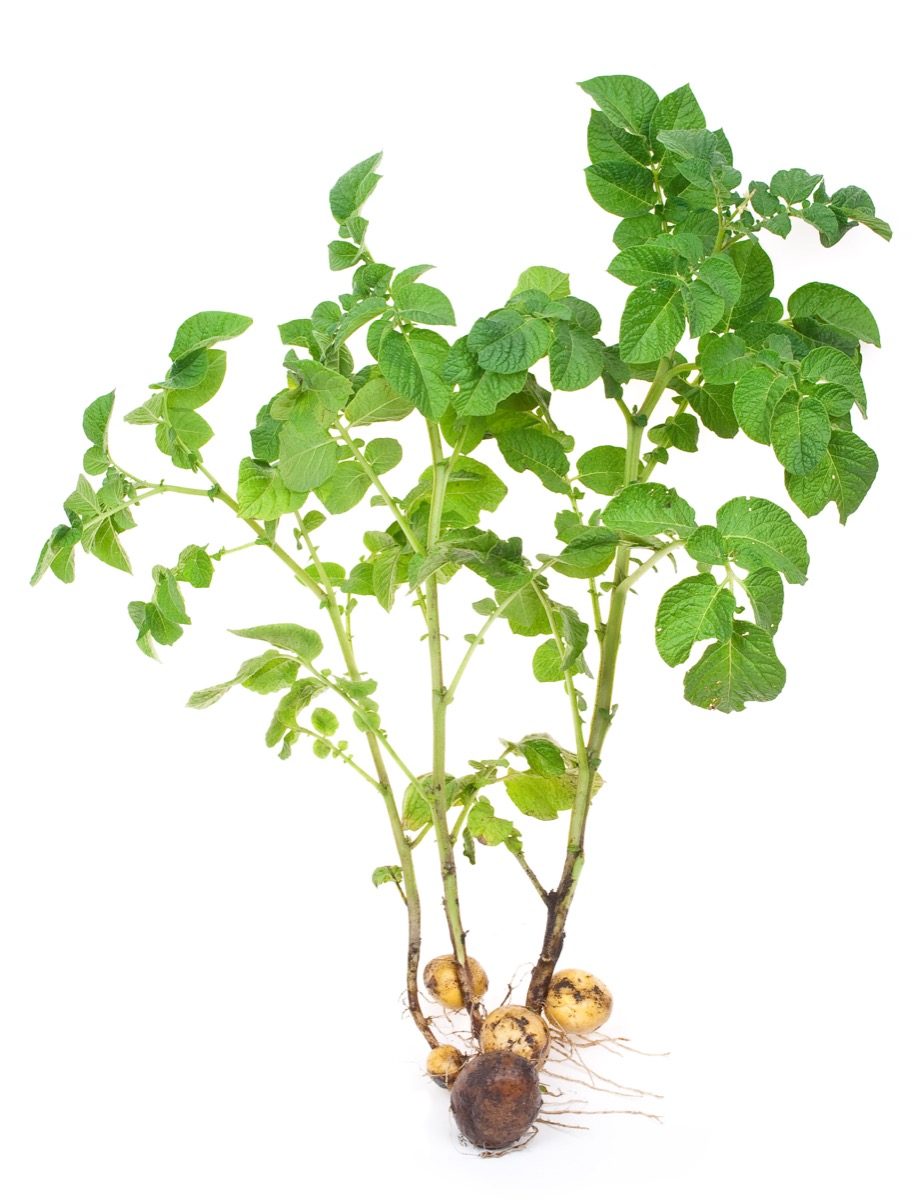
Fill the bag about 1/3 full with soil and place your seed Potato on top before covering it with another layer of soil. As soon as shoots emerge from your Potato plant, add more soil to cover them up, leaving only an inch or two at the top of the bag uncovered. Repeat this process until your burlap bag is almost full.
One major advantage of growing Potatoes in burlap bags is moving them around wherever you like, even indoors. This means they are protected from harsh weather conditions such as frost or heavy rain. Remember to keep watering them regularly but don’t overwater as this could cause root rot. Once your Potato plants have reached maturity, empty your Burlap Bag’s contents onto a large tray and collect those delicious homegrown spuds.
In case you missed it: How to Grow Potatoes in 20 Steps: Secrets, Tips, and Ideas
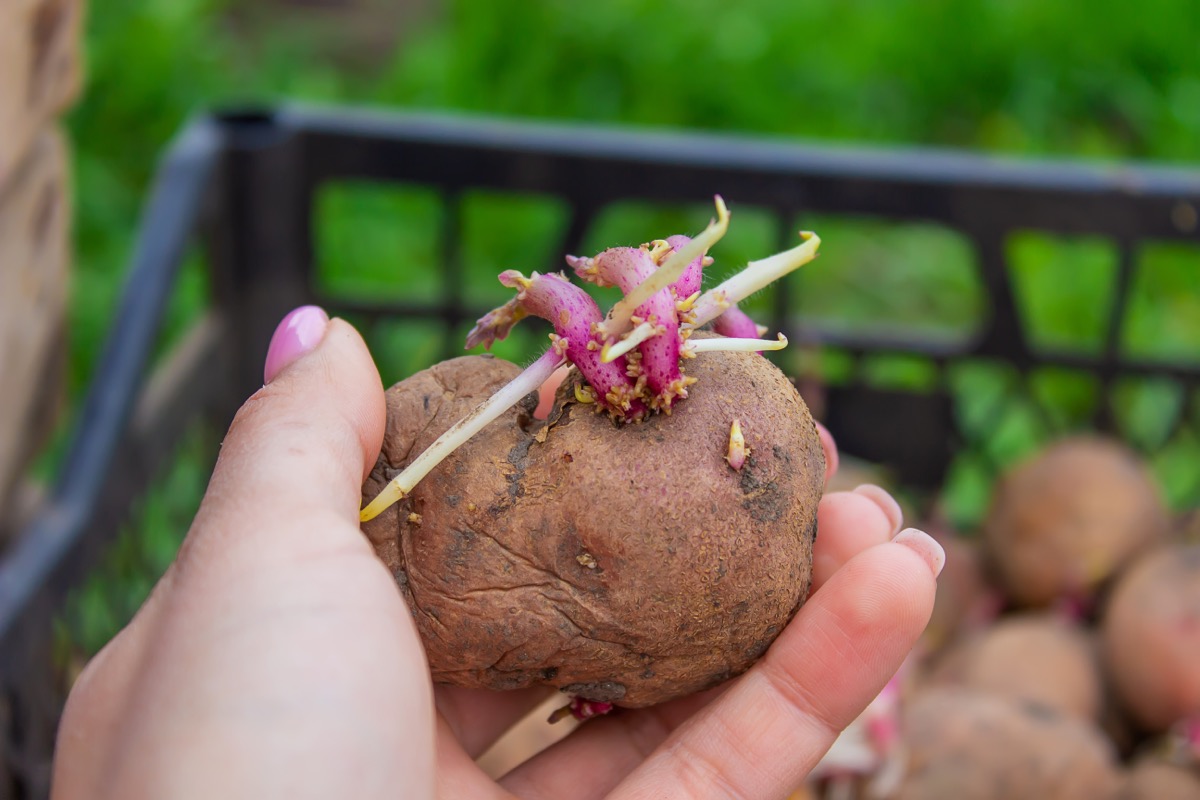
Conclusion
If you have a garden area or just a small balcony space, options are available for any size growing situation. Growing Potatoes in containers is the best way to enjoy fresh and delicious spuds, even if you don’t have a huge garden. Remember to provide adequate drainage, use high-quality soil mix and monitor moisture levels to ensure the best possible results. With these tips, you can harvest your homegrown Potatoes in no time.
- Flower Garden Designs and Layouts for Beginners
- Planting and Spacing Techniques in Papaya: A Beginner’s Guide
- Growing Gold: Essential Techniques for Planting Pineapples
- How to Make Kalanchoe Plant Bushy: Home Remedies and Solutions
- 11 Reasons Why Your Gardenia is Not Blooming: Home Remedies and Solutions
- Eco Elegance: The Guide to Designing a Drought-Tolerant Landscape
- Gardening on a Slope: Strategies for Hillside Landscaping
- Nourish and Flourish: Top Organic Mulches for Thriving House Plants
- Everything You Want to Know about Indian Mogra Flower: Discover Uses and Growing
- Green Thumb Success: Expert Tips for Cultivating Greenhouse Pumpkins All Year Round
- Maximize Growth & Flavor: The Ultimate Guide to Companion Planting in Herb Gardens
- How to Control Rhododendron Problems Naturally: Home Remedies and Organic Ways to Fix Them
- Natural Magic: The Remarkable Benefits of Cinnamon for Plants
- Best Steps to Revive Dying Tulip with Natural and Organic Treatment
- 10 Reasons Why Your Angel Trumpet is Not Blooming: Remedies and Treatment
- How to Fix Periwinkle Leaf and Flower-Related Problems: Natural Remedies and Solutions
- How to Fix Zinnias Leaf and Flower Problems: Discover Natural and Home Remedies
- Organic Steps to Induce Lemon Tree Flowers: A Comprehensive Guide
- Bloom Booster: Crafting the Perfect Homemade Bougainvillea Fertilizer
- Optimizing Growth: A Guide to Applying NPK Fertilizer for Potted Plants
- 10 Best Homemade Fertilizers for Rubber Plant: DIY Recipes and Application Method
- How to Boost Female Pumpkin Flowers: Effective Steps for More Flowers and High Yields
- Transform Your Indoor Garden: Top Benefits of Pink Salt for Houseplants
- 10 Best Homemade Fertilizers for Peacock Plants (Calathea): Easy DIY Guide
- Unlock Blooms: 9 Reasons Why Your Potted Chrysanthemum is Not Blooming
- 8 Reasons Why Your Potted Hibiscus is Not Blooming: Fix it with Simple Solutions
- Unlock Blooms: 9 Key Reasons Your Potted Frangipani Won’t Flower
- 10 Reasons Why Is My Ice Plant Not Blooming: Remedies and Treatment
- 10 Reasons Why My Potted Hydrangea Not Blooming: Treatment and Remedies
- 10 Reasons Why is My Wisteria Not Blooming: Remedies and Treatment
- 10 Reasons Why is My Goldfish Plant Not Blooming: Remedies and Treatment
- Maximize Your Space: Ultimate Guide to Balcony Gardening with Grow Bags
- 10 Reasons Why Your Iris is Not Blooming: Remedies and Treatment
- 10 Reasons Why Your Anthurium Plant is Not Blooming: Treatment and Remedies
- 10 Reasons Why Your Aquaponic Plants Are Not Flowering: Remedies and Treatment
- 10 Reasons Why Your Agapanthus is Not Flowering: Remedies and Treatment